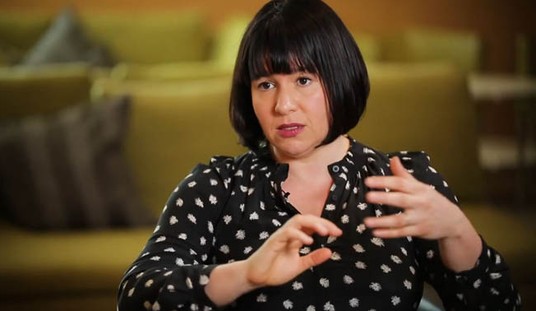Looks like I had it about right yesterday, after the latest durable-goods report showed some of the lost ground being regained in the final month of the third quarter. The economy expanded in the third quarter at an annualized rate of 2.0%, a slight improvement over Q2’s 1.3% but still stuck firmly in the stagnation band. One reason, though, is because the federal government spent at a faster rate than earlier:
Real gross domestic product — the output of goods and services produced by labor and property located in the United States — increased at an annual rate of 2.0 percent in the third quarter of 2012 (that is, from the second quarter to the third quarter), according to the “advance” estimate released by the Bureau of Economic Analysis. In the second quarter, real GDP increased 1.3 percent.
The Bureau emphasized that the third-quarter advance estimate released today is based on source data that are incomplete or subject to further revision by the source agency (see box below). The “second” estimate for the third quarter, based on more complete data, will be released on November 29, 2012.
The increase in real GDP in the third quarter primarily reflected positive contributions from personal consumption expenditures (PCE), federal government spending, and residential fixed investment that were partly offset by negative contributions from exports, nonresidential fixed investment, and private inventory investment. Imports, which are a subtraction in the calculation of GDP, decreased.
The acceleration in real GDP in the third quarter primarily reflected an upturn in federal government spending, a downturn in imports, an acceleration in PCE, a smaller decrease in private inventory investment, an acceleration in residential fixed investment, and a smaller decrease in state and local government spending that were partly offset by downturns in exports and in nonresidential fixed investment.
Here’s the key point on federal spending:
Real federal government consumption expenditures and gross investment increased 9.6 percent in the third quarter, in contrast to a decrease of 0.2 percent in the second. National defense increased 13.0 percent, in contrast to a decrease of 0.2 percent. Nondefense increased 3.0 percent, in contrast to a decrease of 0.4 percent. Real state and local government consumption expenditures and gross investment decreased 0.1 percent, compared with a decrease of 1.0 percent.
That boost has a lot to do with the improvement, especially since exports actually fell in the quarter by 1.6%. Personal consumption kept pace with the overall number at 2.0%, though — not enough to give any indication of a massive consumer-fueled growth spurt on the horizon. Real final sales of domestic product came in at 2.1%, which shows that the 2.0% growth wasn’t due to inventory inflation, as was the case at the end of 2009.
Reuters points out the government-fueled number, and also the fact that the year is still coming in lower than last year:
The U.S. economy expanded at a slightly faster 2 percent annual rate from July through September, buoyed by an uptick in consumer spending and a burst of government spending. …
The pickup in gross domestic product may help President Barack Obama’s message that the economy is improving.
Still, growth remains too weak to rapidly boost hiring. And the 1.74 percent rate for 2012 trails last year’s 1.8 percent growth, a point GOP nominee Mitt Romney will emphasize.
No one who understands economics will argue that a 2.0% quarter shows an improving economy, especially not when that number relied on federal government spending increases. Instead, people will focus on the fact that we’re nowhere near a rate of growth that will even allow job creation to keep up with population growth, let alone put the unemployed back to work. In fact, we’re close to net job loss level numbers — and I suspect that the second iteration of Q3 GDP due in a month may drop the number a bit lower than we’re seeing today.
Update: Daniel Halper reminds us that this is less than half of what the White House projected growth would be this year:
The average GDP growth for the first three quarters of this year is 1.77 percent, according to data released by the the Bureau of Economic Analysis this morning. That is less than half of what the White House predicted GDP growth would be this year, and less than a third of what the Obama administration projected when it first took office. …
When Obama first came into office, in 2009, the White House projected that GDP growth this year (2012) would be 4.6 percent. Then, in 2010, the White House downplayed that projection to 4.3 percent. And last year, the forecast looked even gloomier, at 3.6 percent.
But as the numbers show, the three quarter average of this year came in even worse: 1.77 percent.
That’s more than just an academic exercise. Budget projections depend on economic assumptions about growth, which directly impacts revenue and indirectly impacts demand on safety-net programs. A miss of this magnitude has significant implications for White House budget claims — especially on deficits.








Join the conversation as a VIP Member